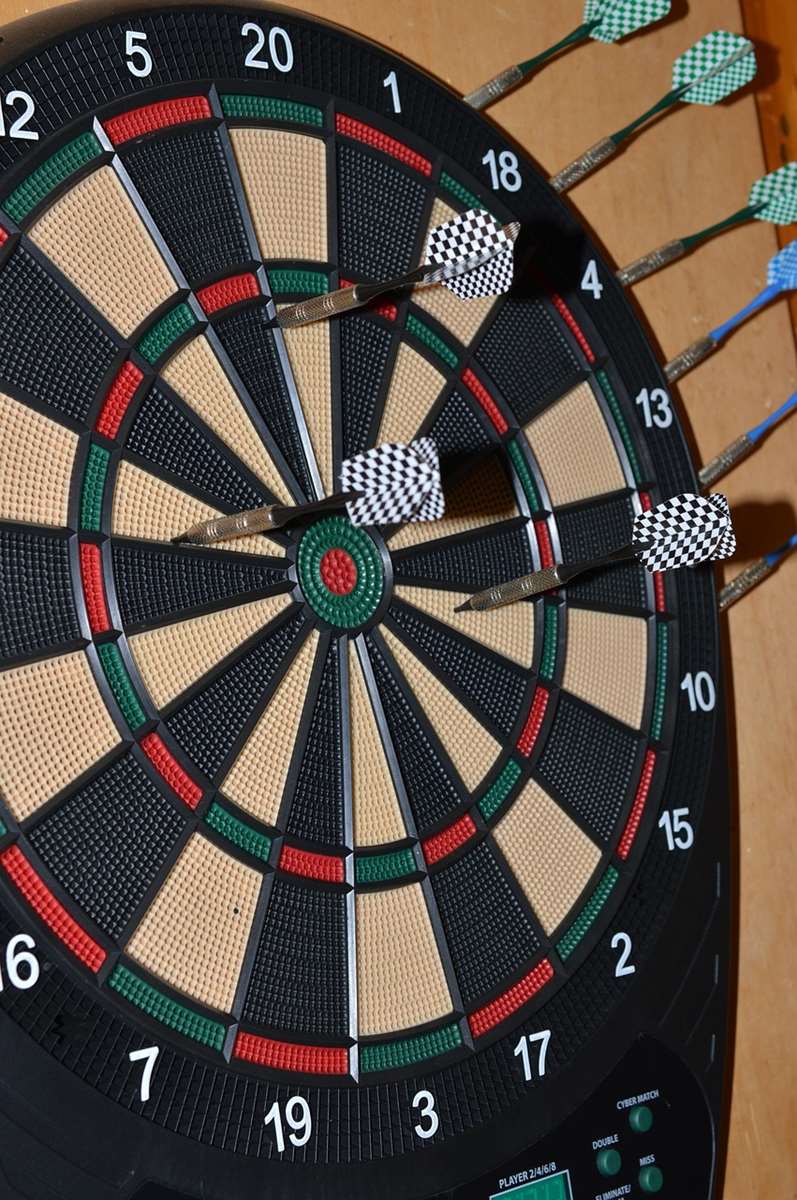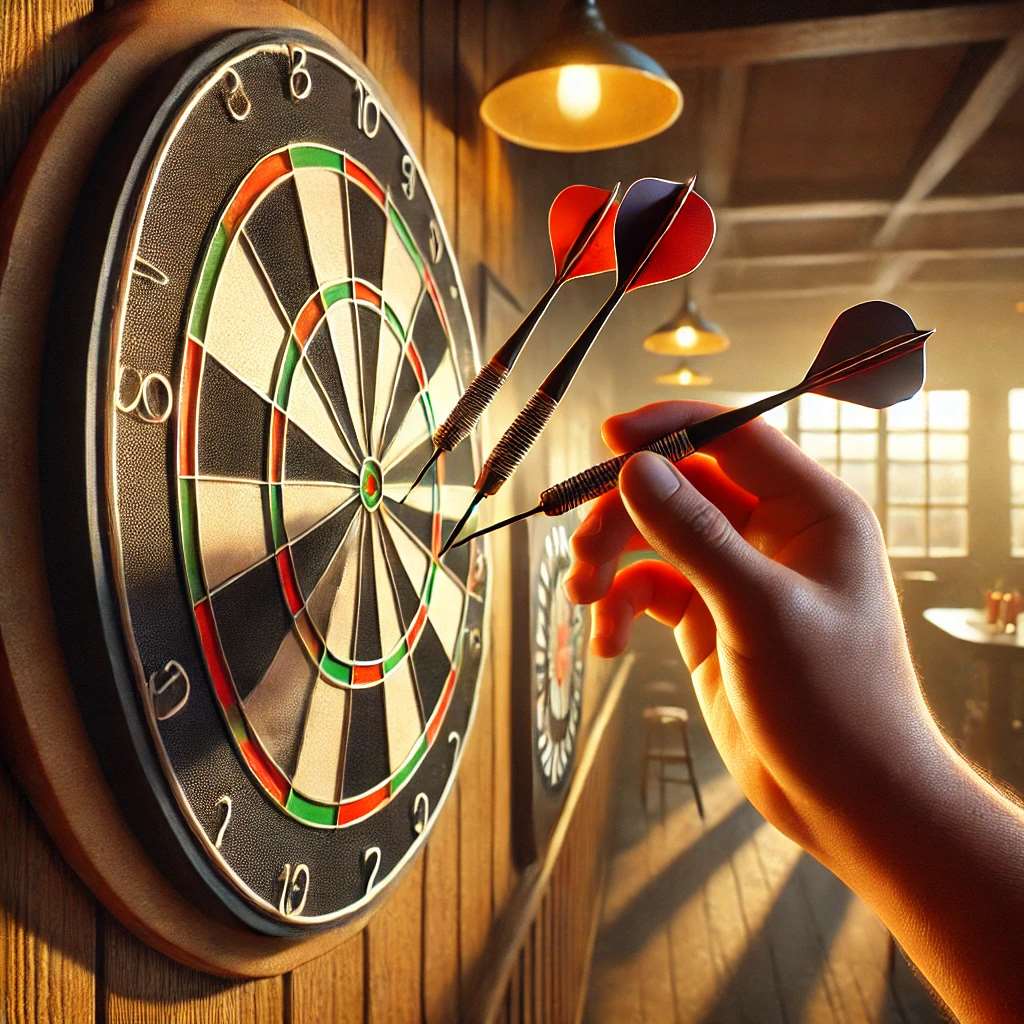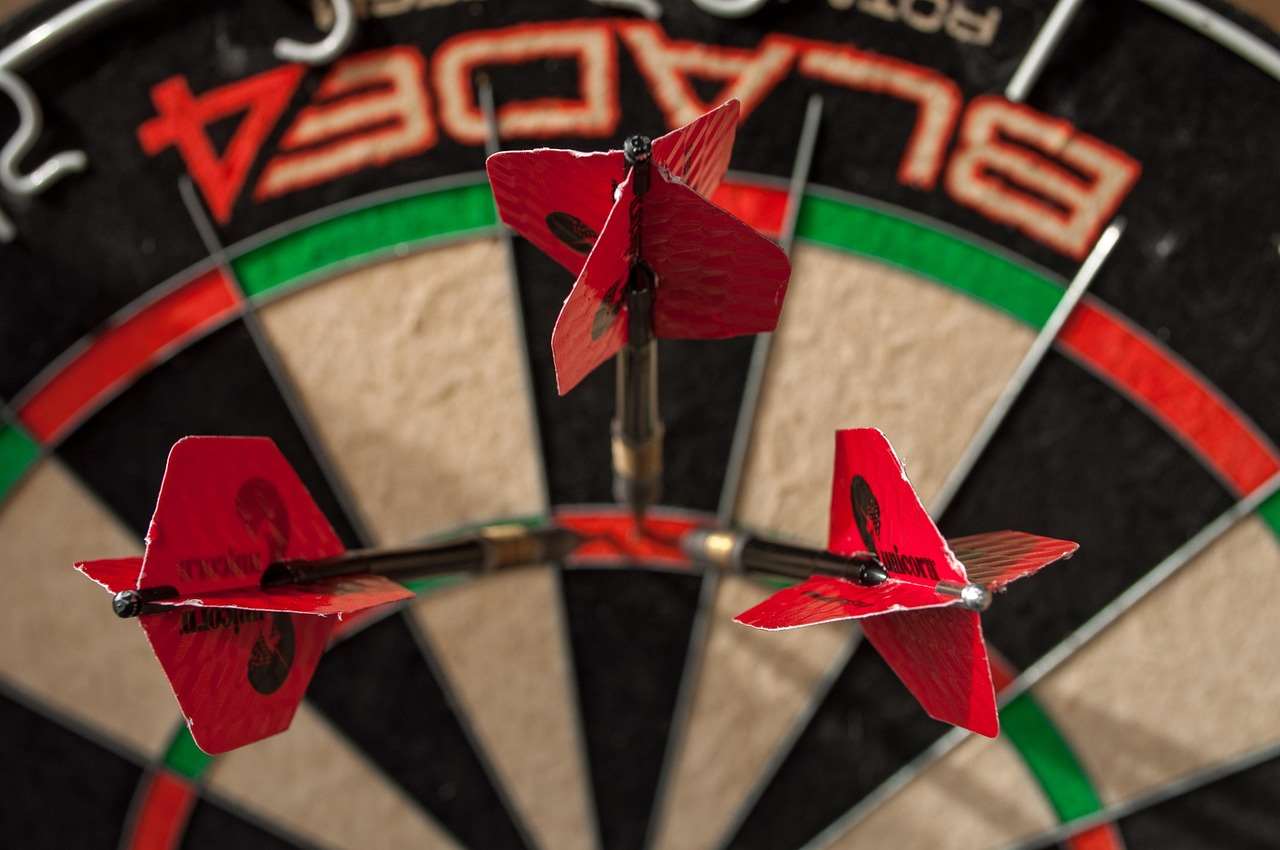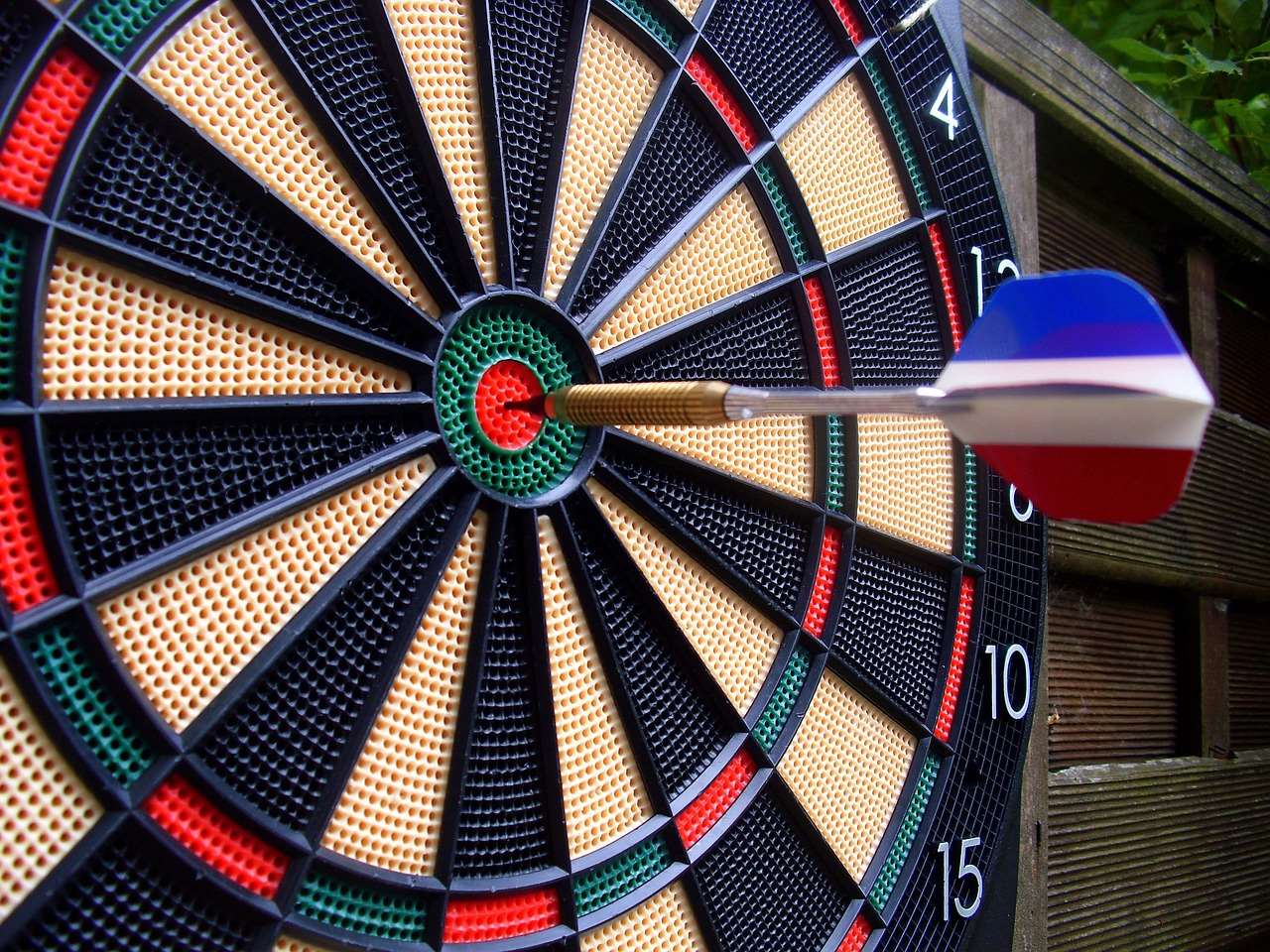The secret to how to get better in darts lies in consistent practice, refined technique, and strategic thinking. This article will guide you through crucial aspects like stance, grip, throw, and mental preparation, equipping you with the knowledge and tools to elevate your dart game.
⚠️ Still Using Pen & Paper (or a Chalkboard)?! ⚠️
Step into the future! The Dart Counter App handles all the scoring, suggests checkouts, and tracks your stats automatically. It's easier than you think!
Try the Smart Dart Counter App FREE!Ready for an upgrade? Click above!
Mastering the Fundamentals: Your Path to Darts Improvement
Before even thinking about fancy checkouts, it’s essential to solidify your fundamental skills. A shaky foundation will limit your progress, no matter how much you practice. We’ll break down the core elements that every successful darts player relies on.

Stance: Building a Solid Base
Your stance is your foundation. A stable and balanced stance allows for a consistent throwing motion. Experiment with different stances to find what feels most comfortable and natural for you. Consider these points:
- Foot Placement: Most players prefer to stand with one foot (usually the dominant foot) pointing towards the oche (the throwing line). The other foot provides balance. Try a slightly angled stance or a more perpendicular one to see what works best.
- Weight Distribution: Your weight should be evenly distributed between your feet, or slightly forward. Avoid leaning too far forward or backward, as this can throw off your balance.
- Body Posture: Maintain an upright posture with a slight bend at the knees. This allows for a smooth and fluid throwing motion.
Grip: Finding the Right Hold
The grip is how you connect with the dart, and it’s highly personal. There’s no single “correct” grip, but here are some common techniques and considerations:
- Number of Fingers: Most players use three or four fingers to grip the dart. Experiment with different numbers of fingers to see what provides the most control.
- Pressure: Apply enough pressure to maintain control of the dart, but avoid gripping too tightly. A relaxed grip allows for a smoother release.
- Placement: Try gripping the dart closer to the front, middle, or back to find your optimal balance point. Consider different types of wire dart stems to improve grip.
Throw: Developing a Consistent Action
The throw is the culmination of all your preparation. A consistent and repeatable throwing motion is crucial for accuracy. Here’s how to get better in darts by improving your throw:
- Arm Action: Your arm should move in a smooth, straight line towards the target. Avoid excessive wrist movement or “snapping” the wrist at the release point.
- Release Point: Aim to release the dart at the same point in each throw. This requires practice and consistency.
- Follow Through: Follow through with your arm after releasing the dart. This helps to maintain accuracy and consistency.
Perfecting Your Technique: Advanced Tips for Darts Improvement
Once you’ve mastered the fundamentals, you can start focusing on refining your technique. These advanced tips will help you take your game to the next level. You can even find a Dart game scoring app here to further improve your technique

Sight Alignment: Focus on Your Target
Proper sight alignment is essential for accuracy. Before each throw, take a moment to focus on your target. Visualize the dart hitting the bullseye or the desired number. Try these techniques:
- Eye Dominance: Determine your dominant eye and use it to align your shot. Close one eye at a time to see which eye sees the target more clearly.
- Fixed Point: Choose a fixed point on the dartboard, such as the wire or the number ring, to focus on. This helps to maintain a consistent aiming point.
- Peripheral Vision: Use your peripheral vision to maintain awareness of your stance and grip.
Rhythm and Timing: Developing a Smooth Flow
A smooth and rhythmic throwing motion is essential for consistency. Avoid jerky or rushed movements. Practice throwing with a consistent tempo and rhythm. These exercises can help:
- Practice Drills: Use practice drills to develop a consistent rhythm. Try throwing at a single target repeatedly, focusing on maintaining a smooth and fluid motion.
- Metronome: Use a metronome to establish a consistent tempo for your throwing motion.
- Visualization: Visualize yourself throwing the dart in slow motion, focusing on each stage of the throwing process.
Dart Trajectory: Understanding the Arc
The trajectory of your dart is influenced by your throwing motion and release point. Understanding how to control your dart trajectory is important for accuracy. To understand this better, you may want to learn more about darts afstand.
- Arc vs. Straight Throw: Experiment with different throwing angles to see how they affect the trajectory of the dart. Some players prefer a more arched throw, while others prefer a straighter throw.
- Release Point Adjustment: Adjust your release point to control the height and distance of your dart.
- Dart Weight and Flight: Consider the weight and flight of your darts, as these factors can also affect the trajectory. Consider using plastic dart shaft and flight for lighter alternatives.
Mental Game: Sharpening Your Focus and Strategy
Darts is not just a physical game; it’s also a mental game. Developing mental toughness and strategic thinking can significantly improve your performance. Many people enjoy darts while watching darts match tv.

Concentration: Staying Focused Under Pressure
Maintaining concentration is crucial for consistent performance. Distractions can easily throw you off your game. Practice these techniques to improve your focus:
- Pre-Throw Routine: Develop a pre-throw routine to help you focus and prepare for each throw. This could involve taking a deep breath, visualizing the target, or performing a specific physical movement.
- Mindfulness: Practice mindfulness techniques to stay present in the moment and avoid getting caught up in negative thoughts or distractions.
- Positive Self-Talk: Use positive self-talk to boost your confidence and maintain a positive attitude.
Strategy: Planning Your Checkouts
Strategic thinking is essential for maximizing your score and winning games. Plan your checkouts in advance to increase your chances of success. Here’s how:
- Checkout Charts: Familiarize yourself with common checkout combinations. Use a checkout chart to help you plan your shots.
- Target Prioritization: Prioritize targets that leave you with easier checkout opportunities.
- Opponent Awareness: Pay attention to your opponent’s score and potential checkouts. This will help you anticipate their moves and plan your own strategy accordingly.
Dealing with Pressure: Staying Calm Under Fire
Pressure can negatively impact your performance. Learn to manage pressure and stay calm in high-stakes situations. Here are some techniques:
- Deep Breathing: Use deep breathing techniques to calm your nerves and reduce anxiety.
- Visualization: Visualize yourself performing well under pressure.
- Acceptance: Accept that mistakes are inevitable and don’t let them derail your focus.
Practice and Consistency: The Key to Long-Term Improvement
Ultimately, how to get better in darts boils down to consistent practice and dedication. Regular practice sessions will help you solidify your technique, improve your accuracy, and develop your mental game.

Setting Up a Practice Routine
Establish a consistent practice routine that fits your schedule and goals. Here are some tips:
- Frequency: Aim to practice several times a week, even if it’s just for a short period.
- Duration: The length of your practice sessions will depend on your goals and available time. Even 30 minutes of focused practice can be beneficial.
- Variety: Vary your practice routine to keep it engaging and challenging. Mix up your drills and target practice.
Structured Practice Drills
Use structured practice drills to focus on specific areas of your game. Here are some popular drills:
- Around the Clock: Throw at each number on the board in sequence.
- Shanghai: Throw at the single, double, and treble of a specific number.
- Checkout Practice: Practice specific checkout combinations.
Analyzing Your Performance
Track your performance and identify areas for improvement. Keep a record of your scores and analyze your throwing technique. Consider recording your throws to identify areas of improvement. A good understanding of dart keywords is necessary for successful online searching.
- Score Tracking: Keep a record of your scores to track your progress over time.
- Video Analysis: Record your throwing technique and analyze it to identify areas for improvement.
- Feedback: Seek feedback from other players or a coach.
Choosing the Right Equipment: Darts, Board, and Accessories
Having the right equipment can make a difference in your performance. Experiment with different darts, dartboards, and accessories to find what works best for you.

Darts: Weight, Grip, and Balance
Darts come in a variety of weights, grips, and balances. Experiment with different types of darts to find what feels most comfortable and provides the best control. Avoid thinking darts i’m the devil because equipment is not to blame for a miss.
- Weight: Darts typically range from 20 to 26 grams. Heavier darts are generally more stable, while lighter darts are easier to control.
- Grip: Darts come with a variety of grip patterns. Choose a grip that provides a secure and comfortable hold.
- Balance: The balance of a dart affects its flight characteristics. Experiment with different balance points to find what works best for you.
Dartboard: Material and Quality
Choose a high-quality dartboard made from sisal fibers. Sisal dartboards are self-healing and provide a consistent playing surface. Ensure that how to fix dart board wire issues are handled immediately.
- Sisal Fibers: Look for a dartboard made from high-quality sisal fibers.
- Wire Construction: Choose a dartboard with thin wires to minimize bounce-outs.
- Mounting: Mount the dartboard securely to a wall or stand.
Accessories: Flights, Shafts, and Cases
Experiment with different flights and shafts to fine-tune the flight characteristics of your darts. Use a dart case to protect your darts when not in use. You can find great deals using dart nieuws to help find the right equipment.
- Flights: Different flight shapes and sizes affect the stability and trajectory of your darts.
- Shafts: Different shaft lengths and materials affect the balance and feel of your darts.
- Cases: Use a dart case to protect your darts and keep them organized.
Conclusion: Your Journey to Darts Mastery
How to get better in darts is a journey that requires dedication, practice, and a willingness to learn. By mastering the fundamentals, refining your technique, developing your mental game, and choosing the right equipment, you can significantly improve your performance and achieve your darts goals. Remember that consistency is key, and with perseverance, you can elevate your game to new heights. Now, grab your darts and start practicing!
Hi, I’m Dieter, and I created Dartcounter (Dartcounterapp.com). My motivation wasn’t being a darts expert – quite the opposite! When I first started playing, I loved the game but found keeping accurate scores and tracking stats difficult and distracting.
I figured I couldn’t be the only one struggling with this. So, I decided to build a solution: an easy-to-use application that everyone, no matter their experience level, could use to manage scoring effortlessly.
My goal for Dartcounter was simple: let the app handle the numbers – the scoring, the averages, the stats, even checkout suggestions – so players could focus purely on their throw and enjoying the game. It began as a way to solve my own beginner’s problem, and I’m thrilled it has grown into a helpful tool for the wider darts community.